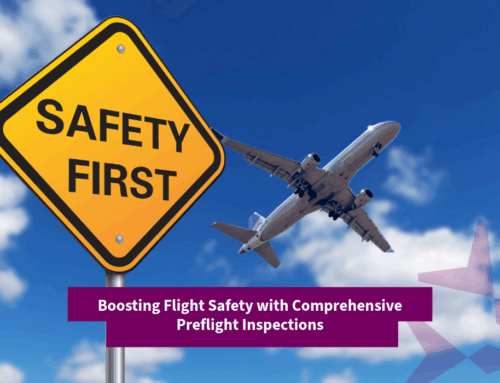The Evolution of Flight Support Services: From Manual Operations to Digital Solutions
Flight support services have come a long way in ensuring the smooth and efficient operation of the aviation industry. In the early days of aviation, these services were largely manual, relying on physical paperwork, phone calls, and direct interactions with local authorities. Today, however, with advancements in technology, flight support has evolved into a highly sophisticated, digitally driven industry, integrating artificial intelligence, data analytics, and real-time communication tools to optimize operations.
This article explores the transformative journey of flight support services, from their manual origins to the cutting-edge digital solutions driving modern aviation today.
The Early Days: Manual Operations and Paperwork
In the early years of aviation, flight support services were rudimentary. Airlines, pilots, and operators had to rely on traditional manual processes to manage their operations. This included:
- Phone Calls and Radio Communication: Direct communication with airports, air traffic control, and ground crews was mostly done through telephone or radio, often leading to delays and misunderstandings.
- Paper-Based Flight Planning: Flight plans were drawn up manually, with charts, maps, and weather reports physically compiled and reviewed. Pilots and operators had to account for all logistics themselves, often with limited resources.
- Manual Permit Applications: Obtaining overflight or landing permits was a time-consuming process that involved lengthy paperwork and coordination with multiple authorities, making the process less efficient.
- Ground Handling Coordination: Ground services were typically coordinated by direct communication, often relying on physical forms or verbal instructions, leading to slower response times in some situations.
While these manual processes served the aviation industry in its early years, they often led to inefficiencies, human errors, and delays that could affect flight schedules and passenger satisfaction.
The Shift to Digital Solutions: Advancements in Technology
As the aviation industry expanded and demand grew, there was a clear need for more efficient, scalable solutions to handle flight support services. This led to the introduction of digital tools and technologies designed to streamline operations, enhance communication, and improve decision-making.
1. Flight Planning Software
One of the first major innovations in flight support services was the development of flight planning software. These systems allowed operators to automate route optimization, taking into account factors such as weather conditions, airspace restrictions, and fuel efficiency. This not only reduced the time spent on flight planning but also improved the accuracy and safety of flight operations.
2. Global Communication Networks
The introduction of satellite communication systems and secure digital channels allowed for real-time updates between airlines, airports, air traffic controllers, and ground services. This improved communication flow meant that delays due to miscommunication or lack of information were significantly reduced.
3. Digital Documentation and Permits
Flight support services began adopting digital platforms to streamline the process of obtaining overflight and landing permits. Operators could submit requests online, reducing the time required for approvals and providing instant access to regulatory updates. This marked a significant departure from the lengthy, paper-based approval process.
4. Integration with Airline Operations Systems
Digital systems began to integrate flight support services with the core operations of airlines. This included integrating with booking systems, crew management platforms, and maintenance software, allowing for smoother coordination between all departments involved in flight operations.
The Age of Automation and Artificial Intelligence
The most recent phase in the evolution of flight support services has been the rise of automation and artificial intelligence (AI). These technologies have taken digital solutions a step further, enhancing efficiency, safety, and scalability in ways that were once unimaginable.
1. Artificial Intelligence in Flight Planning and Weather Forecasting
AI is now being used to optimize flight paths, anticipate weather disruptions, and analyze large sets of data for better decision-making. AI-powered systems can predict weather patterns, assess real-time air traffic, and even suggest alternative routes if there are any risks. This level of automation allows operators to respond faster to changing conditions and ensure safe flight operations.
2. Chatbots and Virtual Assistants for Customer Service
In customer service, flight support companies have implemented AI-driven chatbots and virtual assistants to handle queries related to flight status, bookings, and even logistical support. This allows airlines and ground support teams to provide 24/7 service without the need for human intervention, improving efficiency and reducing response times.
3. Big Data and Predictive Analytics
The use of big data and predictive analytics is transforming how flight support services anticipate and address potential disruptions. By analyzing historical data, operational trends, and real-time information, flight support services can predict maintenance needs, optimize fuel consumption, and enhance overall fleet management.
4. Drone and Robotics Integration
Another emerging trend is the use of drones and robotics in ground handling and maintenance. Drones can be used for inspecting aircraft, assessing runway conditions, or delivering supplies, reducing the need for human resources and improving safety. Robotics are also being introduced for tasks such as cargo handling, fueling, and baggage handling.
The Future of Flight Support Services
Looking forward, the role of flight support services in aviation will continue to evolve with technology. Here are some anticipated trends:
- Blockchain for Security and Efficiency: Blockchain technology could be integrated into flight support services to improve data security, streamline documentation, and ensure the integrity of information across the supply chain.
- Full Automation of Flight Operations: The goal of fully automated flight operations is becoming more realistic with each passing year. In the future, flight support services could be fully automated, from flight planning to landing, reducing human intervention and increasing overall operational efficiency.
- Sustainability in Aviation: As the industry continues to focus on sustainability, flight support services will increasingly adopt green technologies and practices to reduce carbon emissions, such as optimizing flight paths to reduce fuel consumption and exploring alternative fuel options.







